Author Biographies 2
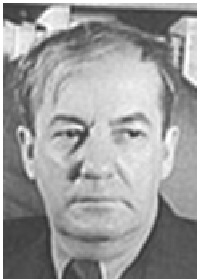 Sherwood Anderson
Sherwood Anderson
1876-1941
Sherwood Anderson (September 13, 1876-March 8, 1941) was an American novelist and short story writer. His most enduring work is the short story sequence, Winesburg, Ohio.
Anderson was born in Camden, Ohio, the third of seven children of Erwin M. and Emma S. Anderson. After Erwin’s business failed, the family was forced to move frequently, finally settling down at Clyde, Ohio, in 1884. Partly as a result of these misfortunes, young Sherwood found various odd jobs to help his family, which earned him the nickname “Jobby.” He left school at age 14.
Anderson moved to Chicago near his brother Karl’s home and worked as a manual laborer until near the turn of the century, when he enlisted in the United States Army. He was called up but did not see action in Cuba during the Spanish-American War. After the war, in 1900, he enrolled at Wittenberg University in Springfield, Ohio. Eventually he secured a job as a copywriter in Chicago and became more successful.
In 1904, he married Cornelia Lane, the daughter of a wealthy Ohio family. He fathered three children while living in Cleveland, Ohio, and later Elyria, Ohio, where he managed a mail-order business and paint manufacturing firms.
In November 1912 he suffered a mental breakdown and disappeared for four days. He was found in a drugstore in Cleveland, having walked almost 30 miles. Soon after, he left his position as president of the Anderson Manufacturing Co. in Elyria, Ohio, and left his wife and three small children to pursue the writer’s life of creativity. Anderson described the entire episode as “escaping from his materialistic existence,” which garnered praise from many young writers, who used his “courage” as an example. Anderson moved back to Chicago, working again for a publishing and advertising company. In 1914, he divorced Lane and married Tennessee Mitchell.
Anderson’s first novel, Windy McPherson’s Son, was published in 1916, followed three years later by his second major work, Marching Men. However, he is most famous for the collection of interrelated short stories, which were published in 1919, known as Winesburg, Ohio. He claimed that “Hands,” the opening story, was the first “real” story he ever wrote. Although his short stories were very successful, Anderson felt the need to write novels. In 1920, he published Poor White, which was rather successful. In 1923, Anderson published Many Marriages, the themes of which he would carry over into much of his later writing.
Beginning in 1924, Anderson lived in the historic Pontalba Apartments (540-B St. Peter Street) adjoining Jackson Square in New Orleans. There, he and his wife entertained William Faulkner, Carl Sandburg, Edmund Wilson and other literary luminaries. Of Faulkner, in fact, he wrote his ambiguous and moving short story, “A Meeting South” and, in 1925, wrote Dark Laughter, a novel rooted in his New Orleans experience. Although the book is now out of print, it was Anderson’s only bestseller. In the 1930s, Anderson published Death in the Woods, Puzzled America (a book of essays) and Kit Brandon, which was published in 1936.
Anderson died in Panama at the age of 64 while on a cruise to South America. An autopsy revealed that he had accidentally swallowed a toothpick (presumably in a martini olive), which had perforated his colon and caused a fatal case of peritonitis. He was buried at Round Hill Cemetery in Marion, Virginia. His epitaph reads, “Life, not Death, is the Great Adventure.”
Source: http://en.wikipedia.org/wiki/Sherwood_Anderson
 Bibliography
Bibliography
Press your browser’s BACK button to return to the previous page.
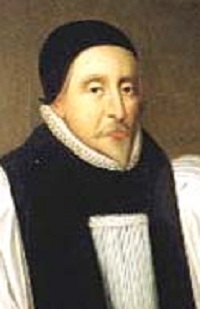 Lancelot Andrewes
Lancelot Andrewes
1555-1626
Lancelot Andrewes (1555-1626) was born at Allhallows, Barking, in 1555. He was an excellent scholar at Merchant Tailor’s School and gained a fellowship at Pembroke College, Cambridge. When Jesus College, Oxford, was founded, young Andrewes was invited to be one of its foundation fellows and, in 1580, he took holy orders.
He was a great favorite with Queen Elizabeth I, who appointed him one of her chaplains and Dean of Westminster. At the accession of James I, Andrewes rose higher still in Court favor and was made Bishop of Chichester in 1605 and had promotions showered upon him. Andrewes became successively Bishop of Ely and of Winchester. He headed the list of authorized translators of the Bible in 1611.
The Sermons of the Angelical Lancelot Andrewes, “the star of preachers,” display to us the qualities that were most enthusiastically welcomed from the pulpit in the days of James I. The oddity of phraseology, the affectations, quips and pranks of style are so extraordinary in the surviving English writings of Andrewes that it is difficult to realize that they were once considered exemplary and found impressive. In his own age, the strange gymnastics of the bishop’s language were not unobserved, but were the objects of adoring emulation.
This admirable prelate, “an infinite treasure, an amazing oracle,” died at Winchester House, Southwark, on September 25, 1626. His English Sermons, at the particular desire of Charles I, were collected by Laud and Buckeridge, and 96 of them were published in 1628. In his lifetime there had only appeared a little volume of sermons on the Lord’s Prayer, entitled Scala Caeli, in 1611.
Source: http://www.luminarium.org/sevenlit/andrewes/lancebio.htm
 Bibliography
Bibliography
Press your browser’s BACK button to return to the previous page.
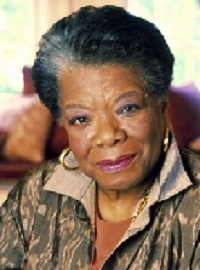 Maya Angelou
Maya Angelou
1928-2014
Writer and African-American activist Maya Angelou was born on April 4, 1928 in St. Louis, Missouri. Angelou spent her difficult formative years moving back and forth between her mother’s and grandmother’s homes. At age eight, she was raped by her mother’s boyfriend, who was subsequently killed by her uncles. The event caused the young girl to go mute for nearly six years. Her teens and early 20s were spent as a dancer, a time filled with isolation and experimentation.
At 16 she gave birth to a son, Guy, after which she toured Europe and Africa in the musical Porgy and Bess. On returning to New York City in the 1960s, she joined the Harlem Writers Guild and became involved in black activism. She then spent several years in Ghana as editor of African Review, where she began to take her life, her activism and her writing more seriously.
Angelou’s five-volume autobiography commenced with I Know Why the Caged Bird Sings in 1970. The memoirs chronicle different eras of her life and were met with critical and popular success. Later books include All God’s Children Need Traveling Shoes (1986) and My Painted House, My Friendly Chicken and Me (1994). She has published several volumes of verse, including And Still I Rise (1987) and Complete Collected Poems of Maya Angelou (1995). Her volume of poetry, Just Give Me a Cool Drink of Water ’fore I Die (1971), was nominated for the Pulitzer Prize.
In 1993, Angelou read “On the Pulse of Morning” at Bill Clinton’s Presidential inauguration, a poem written at his request. It was only the second time a poet had been asked to read at an inauguration, the first being Robert Frost at the inauguration of John F. Kennedy. In 2006, Angelou agreed to host a weekly radio show on XM Satellite Radio’s Oprah & Friends channel. She taught at Wake Forest University in North Carolina, where she had a lifetime position as the Reynolds Professor of American Studies.
Drawing from her own life experiences, Angelou published Letter to My Daughter in 2008. She wrote the work for the daughter she never had, sharing anecdotes and offering advice. Well received, the book earned several honors, including the NAACP Image Award for Outstanding Literary Work-Nonfiction.
She died at the age of 86 at her home in Winston-Salem, NC, on May 28, 2014.
Source: http://www.biography.com/people/maya-angelou-9185388
 Bibliography
Bibliography
Press your browser’s BACK button to return to the previous page.
 Jane Anger
Jane Anger
1500s
Jane Anger was an English author of the late 16th century. The only evidence of her extant is “Her Protection for Women,” a pamphlet published in London in 1589, of which only one original copy survives. The full title is “Jane Anger her protection for women, to defend them against the scandalous reportes of a late surfeiting lover, and all other like venerians that complaine so to bee overcloyed with women’s kindnesse.”
While her name is possibly pseudonymous, Anger is a legitimate English surname and there is some internal evidence that it may be genuine, as may the claim of being a gentlewoman: The Latin tags, various citations and knowledge of history all indicate an educated writer.
Anger was responding directly to “Thomas Orwin’s Boke His Surfeit in Love, with a farwel to the folies of his own phantasie” (Licensed 1588; no longer extant). She argues that men only see women as objects of sexual desire and that, once that desire is satisfied, they abandon them. “The Protection” combines classical myths with vernacular polemic.
Source: http://en.wikipedia.org/wiki/Jane_Anger
 Bibliography
Bibliography
Press your browser’s BACK button to return to the previous page.
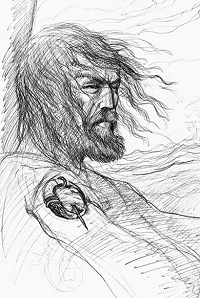 Anonymous: Beowulf
Anonymous: Beowulf
c. 800s
Beowulf is the hero of an ancient epic, titled Beowulf, which is the oldest known epic narrative composed in English. Beowulf is a powerful warrior who comes to the aid of the Danish king Hrothgar, whose hall is raided each night by the hideous man-eating monster Grendel. Beowulf slays Grendel and then Grendel’s angry mother, and rules as king of the Geats until he himself is slain in battle with a dragon.
The Beowulf epic is probably a conglomeration of ancient Scandinavian folk tales, compiled by a single unknown author sometime around the 8th century AD. It remains a standard text in English literature classes in high schools and colleges.
Source: http://www.infoplease.com/biography/var/beowulf.html
 Bibliography
Bibliography
Press your browser’s BACK button to return to the previous page.
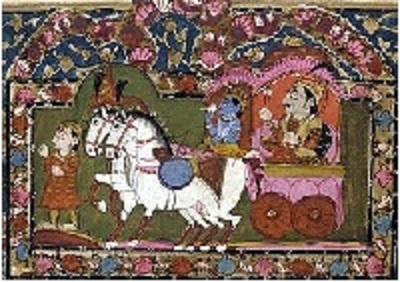 Anonymous: Bhagavad-Gita
Anonymous: Bhagavad-Gita
1000-700 BC
The Bhagavad Gita (Song of God), also more simply known as The Gita, is a 700-verse Hindu scripture that is part of the ancient Sanskrit epic, The Mahabharata. Since The Gita is drawn from the Mahabharata, it is classified as a Smriti text. However, those branches of Hinduism that give it the status of an Upanishad also consider it a sruti or “revealed” text. As it is taken to represent a summary of the Upanishadic teachings, it is also called “the Upanishad of The Upanishads.”
The context of The Gita is a conversation between Lord Krishna and the Pandava prince Arjuna taking place in the middle of the battlefield before the start of the Kurukshetra War,with armies on both sides ready to battle. Responding to Arjuna’s confusion and moral dilemma about fighting his own cousins, who command a tyranny imposed on a disputed empire, Lord Krishna explains to Arjuna his duties as a warrior and prince, and elaborates on yoga, Samkhya, reincarnation, moksha, karma yoga and jnana yoga, among other topics.
Scholars roughly date The Bhagavad Gita to the period between 200 BCE and 200 AD, the authors having been influenced by the soteriologies of Buddhism, Jainism, Samkhya and Yoga. Though The Bhagavad Gita, as a smriti, has no independent authority from The Upanishads (sruti), The Gita is in many respects unalike to The Upanishads in format and content.
The Bhagavad Gita occurs in the Bhishma Parva of The Mahabharata, comprises 18 chapters from the 25th through 42nd and consists of 700 verses. Its authorship is traditionally ascribed to Vyasa, the compiler of The Mahabharata. Because of differences in recensions, the verses of The Gita may be numbered in the full text of The Mahabharata as chapters 6.25-42 or as chapters 6.23-40. According to the recension of The Gita commented on by Adi Shankara, the number of verses is 700, but there is evidence to show that old manuscripts had 745 verses. The verses themselves, using the range and style of Sanskrit meter (chhandas) with similes and metaphors, are written in a poetic form that is traditionally chanted.
Source: http://en.wikipedia.org/wiki/Bhagavad_Gita
 Bibliography
Bibliography
Press your browser’s BACK button to return to the previous page.
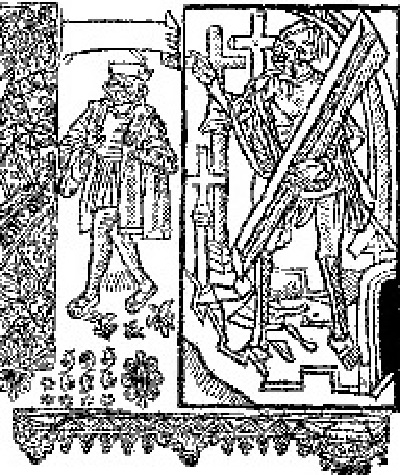 Anonymous: Everyman: Morality Play
Anonymous: Everyman: Morality Play
1509-1530
The Somonyng of Everyman (The Summoning of Everyman), usually referred to simply as Everyman, is a late 15th century English morality play. Like John Bunyan’s novel Pilgrim’s Progress, Everyman examines the question of Christian salvation by use of allegorical characters and what Man must do to attain it. The premise is that the good and evil deeds of one’s life will be tallied by God after death, as in a ledger book. The play is the allegorical accounting of the life of Everyman, who represents all mankind. In the course of the action, Everyman tries to convince other characters to accompany him in the hope of improving his account. All the characters are also allegorical, each personifying an abstract idea such as Fellowship, (material) Goods and Knowledge. The conflict between good and evil is dramatized by the interactions between characters.
Nothing is known of the author. Although the play was apparently produced with some frequency in the 75 years following its composition, no production records survive.
There is a similar Dutch (Flemish) morality play of the same period called Elckerlijc. Scholars have yet to reach an agreement on whether Everyman is a translation of this play or derived independently from a Latin work named Homulus.
Like the characters, the setting is allegorical: God speaks from heaven, then sends Death to earth to seek Everyman, who ascends to Heaven in the final scene. Figuratively, the setting is anywhere on earth.
The cultural setting is based on the Roman Catholicism of the era. Everyman attains afterlife in Heaven by means of good works and the Catholic Sacraments, in particular Confession, Penance, Unction, Viaticum and receiving the Holy Eucharist.
Source: http://en.wikipedia.org/wiki/Everyman_%28play%29
 Bibliography
Bibliography
Press your browser’s BACK button to return to the previous page.
 Anonymous: Mahabharata
Anonymous: Mahabharata
400 BC
The Mahabharata is one of the two major Sanskrit epics of ancient India, the other being The Ramayana. The epic is part of Itihasa.
Besides its epic narrative of the Kurukshetra War and the fates of the Kauravas and the Pandavas, The Mahabharata contains much philosophical and devotional material, such as a discussion of the four “goals of life” or purusharthas. The latter are enumerated as dharma (right action), artha (purpose), kama (pleasure) and moksha (liberation). Among the principal works and stories that are a part of The Mahabharata are The Bhagavad Gita, The Story of Damayanti, an abbreviated version of The Ramayana and The Rishyasringa, often considered as works in their own right.
Traditionally, the authorship of The Mahabharata is attributed to Vyasa. There have been many attempts to unravel its historical growth and compositional layers. The oldest preserved parts of the text are not thought to be appreciably older than around 400 BCE, though the origins of the story probably fall between the 8th and 9th centuries BCE. The text probably reached its final form by the early Gupta period (ca. 4th century CE). The title may be translated as “the great tale of the Bharata dynasty.” According to The Mahabharata itself, the tale is extended from a shorter version of 24,000 verses called simply Bharata.
The Mahabharata in its longest version consists of more than 100,000 shloka or more than 200,000 individual verse lines (each shloka is a couplet) and long prose passages. About 1.8 million words in total, The Mahabharata is roughly 10 times the length of The Iliad and The Odyssey combined, or about four times the length of The Ramayana.
Source: http://en.wikipedia.org/wiki/Mahabharata
 Bibliography
Bibliography
Press your browser’s BACK button to return to the previous page.
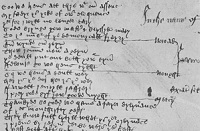 Anonymous: Mankind: Medieval Morality Plays
Anonymous: Mankind: Medieval Morality Plays
1470
Mankind is an English medieval morality play, written c. 1470. The play is a moral allegory about Mankind, a representative of the human race, and follows his fall into sin and his repentance. Its author is unknown; the manuscript is signed by a monk named Hyngham, but he was probably only the scribe since some of the textual oddities are believed to derive from his miscopying of parts of the text because he was not familiar with it.
In his critical edition of the play published by the Early English Text Society in 1969, Eccles argues for a date between 1465 and 1470. Wickham, in his Dent edition of 1976, agrees, finally settling on 1470. The poem certainly dates from the reign of Edward IV of England, and likely has an East Anglian provenance; it was likely “intended to be performed in the area around Cambridge and the environs of Lynn in Norfolk.”
Source: http://en.wikipedia.org/wiki/Mankind_%28play%29
 Bibliography
Bibliography
Press your browser’s BACK button to return to the previous page.
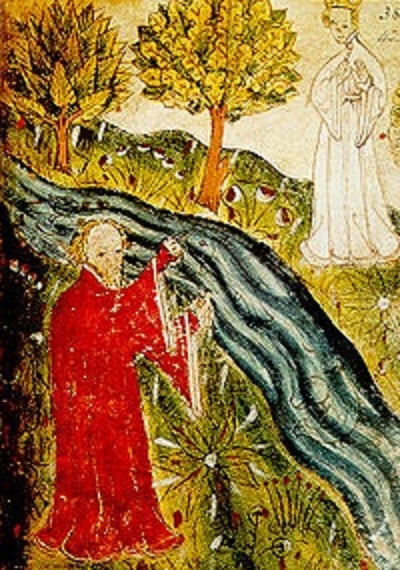 Anonymous: Pearl
Anonymous: Pearl
14th century
The “Pearl Poet,” or the “Gawain Poet,” is the name given to the author of Pearl, an alliterative poem written in 14th century Middle English. Its author appears also to have written the poems Sir Gawain and the Green Knight, Patience and Cleanness. Some scholars suggest the author may also have composed Saint Erkenwald. Save for the latter (found in BL-MS Harley 2250), all these works are known from a single surviving manuscript, the British Library holding Cotton Nero A.x. This body of work includes some of the greatest poetry written in Middle English.
The Pearl Poet remains unidentified. Some scholarship has argued to assign the poem to one John Massey, a member of the landed gentry from Cheshire. This attribution is not widely accepted, however.
The language of the poems shows that the poet was a contemporary of Geoffrey Chaucer, John Gower and William Langland, who are sometimes collectively called the “Ricardian Poets” in reference to the reign of Richard II of England. All four poems of the Cotton Nero A.x manuscript are in the same Middle English dialect, localized to the area of northwestern Staffordshire and southeastern Cheshire, in the English midlands. This may merely indicate the dialect of the scribe responsible for copying the poems, but there is good evidence that the dialect of poet and scribe were very similar. It is, therefore, thought most likely that the poet was a native of east Cheshire or west Staffordshire and was writing in the latter part of the 14th century, and internal evidence indicates that all four works were probably written by the same author.
Any other information must be deduced from the poems’ themes, as there is neither a definite authorial attribution within them nor any “tradition” as to the author’s identity (as with Langland and Piers Plowman). The poet would seem to be exceptionally conversant with learning, shows a deep knowledge of technical vocabulary about hunting and the court, vividly describes the landscape of the region and has an interest in poverty as a Christian virtue. However, the writer of the Cotton Nero A.x poems never refers to contemporary scholarship as Chaucer, for example, does; the poems show much more of a tendency to refer to materials from the past (the Arthurian legends, stories from the Bible, etc.) than any new learning, so it is perhaps less possible to associate him or her with the universities, monasteries or the court in London.
Despite this, the Pearl Poet must have been educated and probably of a certain social standing, perhaps a member of a family of landed gentry. J.R.R. Tolkien and E.V. Gordon, after reviewing the allusions, style and themes of Gawain and the Green Knight, concluded in 1925: “He was a man of serious and devout mind, though not without humor; he had an interest in theology, and some knowledge of it, though an amateur knowledge perhaps, rather than a professional; he had Latin and French and was well enough read in French books, both romantic and instructive; but his home was in the West Midlands of England; so much his language shows, and his metre, and his scenery.”
Source: http://en.wikipedia.org/wiki/Pearl_Poet
 Bibliography
Bibliography
Press your browser’s BACK button to return to the previous page.
 Anonymous: Sir Gawain and the Green Knight
Anonymous: Sir Gawain and the Green Knight
1375-1400
Sir Gawain and the Green Knight is a Medieval English romance in the Arthurian tradition. The text is thought to have been composed in the mid- to late 14th century. The only extant manuscript, MS. Cotton Nero A.x. in the British Library, is itself a copy of an earlier original, and dates from around 1400. The anonymous author is today called alternately “The Pearl Poet,” after the poem Pearl in the same manuscript, or “The Gawain Poet.” The same author is also thought to have composed the other two poems in the manuscript, Cleanness and Patience. Nothing conclusive is known of the author’s identity or biography.
Gawain is a verse romance. Romance takes its name from the French Roman, a moniker used originally for any secular work written in one of the Romance languages; i.e., languages related to the Roman tongue of Latin (Italian, Spanish, French and Portuguese), the “vulgar tongues” (languages of the people, non-Latin). More particularly, the term Roman came to be associated with tales of chivalry and courtoisie, such as the Arthurian tales. While the epic hero still coexisted for some time with the new romantic hero, the changes in society afforded more popularity for the romance. Epic literature was the national or tribal literature of a given people, the epic hero the defender, the fight being for the survival of the tribe or nation. With the rise of the feudal system and the relative prosperity of the upper classes, there arose a leisure class who did not have to go out to fight monsters to the death to save their villages – this audience was a courtly one, with time for niceties, and it wanted heroes who faced fantastical challenges out of choice, not out of a survival instinct. The romantic, or chivalric, hero often is out to find adventure, he is fighting for an idea and his demise or potential failure will not result in the demise of a whole nation. So Gawain sets out to find the Green Knight and undergoes many trials to his ideals and virtue, as compared with Beowulf, who has to fight Grendel and his dame to save his people.
Sir Gawain and the Green Knight is written in a North or West Midlands dialect. It is quite a challenge to non-Medievalists, which is why students are likely to encounter the poem in one of its many modern translations. It is written in long alliterative lines with the rhyme scheme of ababa, in 101 stanzas. In addition to its appealing subject matter (the interest in tales of King Arthur and the knights of the Round Table having waned little since the Middle Ages), the poem possesses a lyrical beauty, a flowing artistry, which can only be appreciated in full in the original.
Source: http://www.luminarium.org/medlit/gawainintro.htm
 Bibliography
Bibliography
Press your browser’s BACK button to return to the previous page.
 Anonymous: Song of Roland
Anonymous: Song of Roland
11th century
The Song of Roland (French: La Chanson de Roland) is a heroic poem based on the Battle of Roncesvalles in 778, during the reign of Charlemagne. It was written in the late 11th century and is the oldest surviving major work of French literature. It exists in various manuscript versions that testify to its enormous and enduring popularity in the 12th-14th centuries. The oldest of these is the Oxford manuscript, which contains a text of some 4,004 lines (the number varies slightly in different modern editions) and is usually dated to the middle of the 12th century (between 1140 and 1170). The epic poem is the first and most outstanding example of the chanson de geste, a literary form that flourished between the 11th and 15th centuries and celebrated the legendary deeds of a hero.
There are nine extant manuscripts of The Song of Roland in Old French. The oldest of these manuscripts is held at the Bodleian Library at Oxford. This copy dates between 1140 and 1170 and was written in Anglo-Norman.
Scholars estimate that the poem was written between approximately 1040 and 1115, and most of the alterations were performed by about 1098. Some favor an earlier dating, because it allows one to say that the poem was inspired by the Castilian campaigns of the 1030s, and that the poem went on to be a major influence in the First Crusade. Those who prefer a later dating do so on grounds of the brief references made in the poem to events of the First Crusade. In one section, Palestine is named Outremer, its Crusader name, but is presented as a Muslim land where there are no Christians.
Source: http://en.wikipedia.org/wiki/The_Song_of_Roland
 Bibliography
Bibliography
Press your browser’s BACK button to return to the previous page.
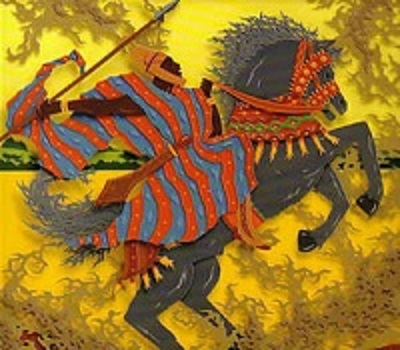 Anonymous: Sundiata: An Epic of Old Mali
Anonymous: Sundiata: An Epic of Old Mali
1300s
Nearly 1,000 years ago, the region of West Africa that included what is now Ghana and Mali was caught up in turmoil as rival kings fought for control of the profitable salt and gold trade. In the Keita clan of the Mandingo, there arose a heroic leader named Mari, or Sogolon Djata, who united his people, fought off their rivals and ushered in a glorious period of peace and prosperity. In the rapidly spoken Mandingo language, “sogolon Djata” became “sundiata.” In this epic, Sogolon Djata’s battle for strength echoes the Mandingos’ struggle for survival.
Source: http://litspellingwriting5.blogspot.com/2009/06/sundiata-epic-of-old-mali-reading.html
 Bibliography
Bibliography
Press your browser’s BACK button to return to the previous page.
 Anonymous: The Arabian Nights
Anonymous: The Arabian Nights
One Thousand and One Nights is a collection of Middle Eastern and South Asian stories and folk tales compiled in Arabic during the Islamic Golden Age. It is often known in English as The Arabian Nights, from the first English language edition (1706), which rendered the title as The Arabian Nights’ Entertainment.
The work was collected over many centuries by various authors, translators and scholars across the Middle East, Central Asia and North Africa. The tales themselves trace their roots back to ancient and medieval Arabic, Persian, Indian, Turkish, Egyptian and Mesopotamian folklore and literature. In particular, many tales were originally folk stories from the Caliphate era, while others, especially the frame story, are most probably drawn from the Pahlavi Persian work, Hazar Afsan, which in turn relied partly on Indian elements.
What is common throughout all the editions of The Nights is the initial frame story of the ruler Shahryar and his wife, Scheherazade, and the framing device incorporated throughout the tales themselves. The stories proceed from this original tale; some are framed within other tales, while others begin and end of their own accord. Some editions contain only a few hundred nights, while others include 1,001 or more.
Some of the stories of The Nights, particularly “Aladdin’s Wonderful Lamp,” “Ali Baba and the Forty Thieves” and “The Seven Voyages of Sinbad the Sailor,” while almost certainly genuine Middle-Eastern folk tales, were not part of The Nights in Arabic versions, but were interpolated into the collection by Antoine Galland and other European translators.
Source: http://en.wikipedia.org/wiki/One_Thousand_and_One_Nights
 Bibliography
Bibliography
Press your browser’s BACK button to return to the previous page.
 Anonymous: The Dream of the Rood
Anonymous: The Dream of the Rood
c. 10th century
The Dream of the Rood is one of the earliest Christian poems in the corpus of Old English literature and an example of the genre of dream poetry. Like most Old English poetry, it is written in alliterative verse. Rood is from the Old English rod “pole,” specifically “crucifix.” Preserved in the 10th century Vercelli Book, the poem may be considerably older, even one of the oldest works of Old English literature.
The poem is set up with the narrator having a dream. In this dream or vision he is speaking to the Cross on which Jesus was crucified. The poem itself is divided up into three separate sections. In section one, the narrator has a vision of the Cross. Initially, when the dreamer sees the Cross, he notes how it is covered with gems. He is aware of how wretched he is compared to how glorious the tree is. However, he comes to see that amidst the beautiful stones it is stained with blood.
In section two, the Cross shares its account of Jesus’ death. The Crucifixion story is told from the perspective of the Cross. It begins with the enemy coming to cut the tree down and carrying it away. The tree learns that it is to be the bearer of a criminal, but instead the Christ comes to be crucified. The Lord and the Cross become one, and they stand together as victors, refusing to fall, taking on insurmountable pain for the sake of mankind. It is not just Christ, but the Cross as well that is pierced with nails.
The Rood and Christ are one in the portrayal of the Passion – they are both pierced with nails, mocked and tortured. Then, just like with Christ, the Cross is resurrected and adorned with gold and silver. It is honored above all trees just as Jesus is honored above all men. The Cross then charges the visionary to share all that he has seen with others.
In section three, the author gives his reflections about this vision. The vision ends and the man is left with his thoughts. He gives praise to God for what he has seen and is filled with hope for eternal life and his desire to once again be near the glorious Cross.
Source: http://en.wikipedia.org/wiki/Dream_of_the_Rood
 Bibliography
Bibliography
Press your browser’s BACK button to return to the previous page.
 Anonymous: The Epic of Gilgamesh
Anonymous: The Epic of Gilgamesh
c. 2000 BC
The Epic of Gilgamesh, an epic poem from Mesopotamia, is among the earliest surviving works of literature. The literary history of Gilgamesh begins with five independent Sumerian poems about Gilgamesh, king of Uruk. Apparently, four of these were used as source material for a combined epic in Akkadian. This first, “Old Babylonian” version of the epic dates to the 18th century BC and is titled Shutur eli sharri (“Surpassing All Other Kings”). Only a few fragments of it survive. The later, “standard Babylonian” version dates from the 13th to the 10th centuries and bears the title Sha naqba imuru (“He who Saw the Deep”). Fragments of approximately two thirds of this longer, 12-tablet version have been recovered. Some of the best copies were discovered in the library ruins of the 7th century BC Assyrian king, Ashurbanipal.
The story centers on a friendship between Gilgamesh and Enkidu. Enkidu is a wild man created by the gods as Gilgamesh’s equal to distract him from oppressing the people of Uruk. Together, they journey to the Cedar Mountain to defeat Humbaba, its monstrous guardian. Later they kill the Bull of Heaven, which the goddess Ishtar sends to punish Gilgamesh for spurning her advances. As a punishment for these actions, the gods sentence Enkidu to death.
The latter half of the epic focuses on Gilgamesh’s distress at Enkidu’s death and his quest for immortality. In order to learn the secret of eternal life, Gilgamesh undertakes a long and perilous journey to find the immortal flood hero, Utnapishtim. He learns, “The life that you are seeking you will never find. When the gods created man they allotted to him death, but life they retained in their own keeping.” His fame, however, lived on after his death because of his great building projects and his account of what Utnapishtim told him happened during the flood. His story has been translated into many different languages and he has become an icon of popular culture.
Source: http://en.wikipedia.org/wiki/Epic_of_Gilgamesh
 Bibliography
Bibliography
Press your browser’s BACK button to return to the previous page.
 Anonymous: The Koran
Anonymous: The Koran
610-632
The Quran, also transliterated Qur’an, Koran, Alcoran, Coran, Kuran and al-Qur’an, is the central religious text of Islam, which Muslims consider the verbatim word of God. It is regarded widely as the finest piece of literature in the Arabic language.
The Quran is composed of verses (Ayah) that make up 114 chapters (suras) of unequal length that are classified either as Meccan or Medinan, depending upon their place and time of revelation. Muslims believe The Quran to be verbally revealed through the angel Jibral (Gabriel) from God to Muhammad gradually over a period of approximately 23 years beginning in 610 CE, when Muhammad was 40, and concluding in 632 CE, the year of his death.
Shortly after Muhammad’s death, The Quran was compiled into a single book by order of the first Caliph Abu Bakr and at the suggestion of his future successor, Umar. Hafsa, Muhammad’s widow and Umar’s daughter, was entrusted with that Quranic text after the second Caliph Umar died. When the third Caliph Uthman began noticing slight differences in Arabic dialect, he sought Hafsa’s permission to use her text to be set as the standard dialect, the Quraish dialect now known as Fus’ha (Modern Standard Arabic). Before returning the text to Hafsa, Uthman made several thousand copies of Abu Bakr’s redaction and, to standardize the text, invalidated all other versions of The Quran. This process of formalization is known as the “Uthmanic recension.” The present form of The Quran text is accepted by most scholars as the original version compiled by Abu Bakr.
Muslims regard The Quran as the main miracle of Muhammad, the proof of his prophethood and the culmination of a series of divine messages that started with the messages revealed to Adam, regarded in Islam as the first prophet, and continued with the Suhuf Ibrahim (Scrolls of Abraham), the Tawrat (Torah or Pentateuch) of Moses, the Zabur (Tehillim or Book of Psalms) of David and the Injil (Gospel) of Jesus. The Quran assumes familiarity with major narratives recounted in Jewish and Christian scriptures, summarizing some, dwelling at length on others and in some cases presenting alternative accounts and interpretations of events. The Quran describes itself as a book of guidance, sometimes offering detailed accounts of specific historical events, and often emphasizing the moral significance of an event over its narrative sequence.
Source: http://en.wikipedia.org/wiki/Quran
 Bibliography
Bibliography
Press your browser’s BACK button to return to the previous page.
 Anonymous: The Upanishads
Anonymous: The Upanishads
500s BC
The Upanishads are philosophical texts considered to be an early source of the Hindu religion. Traditionally, these texts are considered to be authorless and are categorized as Sruti. The Upanishads are found mostly in the concluding part of the Brahmanas and in the Aranyakas. All Upanishads have been passed down in oral tradition.
More than 200 are known, of which the first dozen or so, the oldest and most important, are variously referred to as the principal, main (mukhya) or old Upanishads. With The Bhagavad Gita and The Brahmasutra (known collectively as The Prasthanatrayi), The Mukhya Upanishads provide a foundation for several later schools of Indian philosophy (vedanta) – among them two influential monistic schools of Hinduism.
Historians believe the chief Upanishads were composed over a wide period ranging from the Pre-Buddhist period to the early centuries BCE, though minor Upanishads were still being composed in the medieval and early modern periods. However, there has been considerable debate among authorities about the exact dating of individual Upanishads.
The Sanskrit term “Upanisad” derives from upa- (nearby), ni- (at the proper place, down) and sad (to sit) thus: “sitting down near,” implying sitting near a teacher to receive instruction or, alternatively, “sitting at the foot of (teacher)” or “laying siege” to the teacher. A gloss of the term “Upanishad” based on Shankara’s commentary on the Katha and Brihadaranyaka Upanishad equates it with Atmavidya, that is, “knowledge of the Self,” or Brahmavidya, “knowledge of Brahma.” Other dictionary meanings include “esoteric doctrine” and “secret doctrine.”
Source: http://en.wikipedia.org/wiki/Upanishads
 Bibliography
Bibliography
Press your browser’s BACK button to return to the previous page.
 Anonymous: York Mystery Plays
Anonymous: York Mystery Plays
1376
The York Mystery Plays, more properly called The York Corpus Christi Plays, are a Middle English cycle of 48 mystery plays, or pageants, that cover sacred history from the creation to the Last Judgment. These were traditionally presented on the feast day of Corpus Christi (a movable feast occurring the Thursday after Trinity Sunday, between May 23 and June 24). They were performed in the city of York, from the middle of the 14th century until 1569. It is one of only four virtually complete surviving English mystery play cycles, with the others known as The Chester Mystery Plays, The Towneley/Wakefield Plays and N-Town Plays. In addition to these, two long, composite and late mystery pageants have survived from the Coventry cycle, and there are records and fragments from other similar productions which took place elsewhere. A manuscript of the York plays, probably dating from sometime between 1463 and 1477, survives at the British Library.
There is no record of the first performance of The York Mystery Plays, but they are first recorded celebrating the festival of Corpus Christi in York in 1376, by which time the use of pageant wagons had already been established. The plays were organized, financed and often performed by the York Craft Guilds (“Mystery” is a play on words, representing both a religious truth, or rite and, in its Middle English meaning of a trade or craft). The wagons would be paraded through the streets of York, stopping at each of 12 playing stations designated by the city banners.
The cycle uses many different verse forms but most have rhyme, a regular rhythm with fairly short lines and frequent alliteration. The balance of critical opinion is in favor of the idea of several clerics being responsible for their authorship, one of whom is conventionally known as the “York Realist.” The plays were originally presented upon carts and wagons, dressed for the occasion.
The plays continued after the Reformation when, in 1548, the feast of Corpus Christi was abolished in England. The plays accommodated themselves to the new religious orthodoxy by cutting scenes honoring the Virgin Mary but were finally suppressed in 1569.
Source: http://en.wikipedia.org/wiki/York_Mystery_Plays
 Bibliography
Bibliography
Press your browser’s BACK button to return to the previous page.
 Susan B. Anthony
Susan B. Anthony
1820-1906
Susan B. Anthony was a prominent civil rights leader during the women’s suffrage movement of the 1800s. She become involved in the anti-slavery movement, but it was in doing that work that she encountered gender inequality. With Elizabeth Cady Stanton, she began her work for women’s right to vote. Anthony established a weekly paper called The Revolution, co-founded the National Woman Suffrage Association (NWSA) and gave many lectures in the U.S. and Europe.
Born on February 15, 1820, in Adams, Massachusetts, Anthony grew up in a politically active family. They worked to end slavery in what was called the abolitionist movement. They were also part of the temperance movement, which wanted the production and sale of alcohol limited or stopped completely. Anthony was inspired to fight for women’s rights while campaigning against alcohol. She was denied a chance to speak at a temperance convention because she was a woman. Anthony later realized that no one would take women in politics seriously unless they had the right to vote.
Along with activist Elizabeth Cady Stanton, Anthony founded the National Woman Suffrage Association in 1869. Around this time, the two created and produced The Revolution, a weekly publication that lobbied for women’s rights. Later the pair edited three volumes of History of Woman Suffrage.
Anthony was tireless in her efforts, giving speeches around the country to convince others to support a woman’s right to vote. She even took matters into her own hands in 1872 when she voted in the presidential election illegally. Anthony was arrested and tried unsuccessfully to fight the charges. She ended up being fined $100 – a fine she never paid.
When Anthony died on March 13, 1906, women still did not have the right to vote. It wasn’t until 1920, 14 years after her death, that the 19th Amendment to the U.S. Constitution, giving all adult women the right to vote, was passed. In recognition of her dedication and hard work, the U.S. Treasury Department put Anthony’s portrait on one-dollar coins in 1979, making her the first woman to be so honored.
http://www.biography.com/people/susan-b-anthony-194905
 Bibliography
Bibliography
Press your browser’s BACK button to return to the previous page.
 Mary Antin
Mary Antin
1881-1949
Born in Polotsk in the Russian Pale of Settlement on June 13, 1881, to Israel Pinchus and Esther (Hannah Hayye Weltman) Antin, Maryashe Antin was the second of six children. For a brief period in her childhood, while the family business flourished, she learned with private tutors. But serious illness left the business in ruins. In 1891, unable to earn a living, her father set off, along with hundreds of thousands of others, to seek his fortune in America. His family joined him in Boston in 1894.
Guided by her teachers, she vaulted through grammar school in four years. At the same time, she began to fulfill her literary ambition. Publication of her poems in Boston newspapers made her a local celebrity.
Knowing of the family’s desperate need to put all hands to work to make ends meet, Hattie L. Hecht, a local Jewish communal leader, persuaded Philip Cowen, editor of The American Hebrew, to arrange for the publication of Antin’s first book. In the summer of 1894, the 13-year-old, an inveterate letter writer, had described to an uncle the family’s journey. Translated from the Yiddish and owing to a misprint of the name of her town, these letters became From Plotzk to Boston (1899). Income from the book’s sales enabled Antin to continue her education at Boston’s premier female high school, Girls’ Latin School, and to dream of the day when she would enter college.
While most of her poems remained unpublished, Josephine Lazarus – a transcendentalist, sister of the poet Emma Lazarus and member of Antin’s new circle of friends – convinced her to write her autobiography. Josephine Lazarus’ death in 1910 spurred Antin to begin. In September 1911, The Atlantic Monthly published Antin’s “Malinke’s Atonement,” a remarkable short story set in Polotsk about an impoverished, nine-year-old “ignorant female” who, after a daring test of faith, wins access to the forbidden – an education “the same as a boy.” Two months later, The Atlantic Monthly published the first installment of what became her best-known work, The Promised Land (1912).
From 1913 to 1918, Antin traveled throughout the United States, lecturing, often to Jewish organizations, on the themes set forth in The Promised Land.
In 1914, she followed the success of The Promised Land with her last full-length work, They Who Knock at Our Gates, a polemic against the movement to restrict immigration. Although well received, this work was less popular than her autobiographical musings.
America’s entry into World War I resulted in a serious personal crisis that permanently changed her life. While she threw herself into lectures for the Allied cause, her husband expressed his pro-German sympathies forcibly, causing a severe rift in their household. In 1918, worried over their estrangement, Antin suffered an attack of what was then diagnosed as neurasthenia, from which she never fully recovered. The illness caused her to retire from public life.
Mentally alert, but physically an invalid in her final years, Mary Antin resided with her younger American-born sisters. She died of cancer on May 15, 1949, in Suffern, New York.
Source: http://jwa.org/encyclopedia/article/antin-mary
 Bibliography
Bibliography
Press your browser’s BACK button to return to the previous page.
 Gloria Anzaldua
Gloria Anzaldua
1942-2004
Gloria Evangelina Anzaldua (September 26, 1942-May 15, 2004) was considered a leading scholar of Chicano cultural theory and Queer theory. She loosely based her most well-known book, Borderlands/La Frontera: The New Mestiza, on her life growing up on the Mexican-Texas border and incorporated her lifelong feelings of social and cultural marginalization into her works.
Anzaldua was born in the Rio Grande Valley of south Texas on September 26, 1942 to Urbano Anzaldua and Amalia Anzaldua nee Garcia.
When she was 11, her family relocated to Hargill, Texas. Despite feeling discriminated against as a sixth-generation Tejana and as a female, and despite the death of her father from a car accident when she was 14, Anzaldua still obtained her college education.
After earning a Bachelor of Arts degree in English in 1968 from the then-Pan American University (now University of Texas-Pan American), Anzaldua worked as a preschool and special education teacher. In 1977, she moved to California, where she supported herself through her writing, lectures and occasional teaching stints about feminism, Chicano studies and creative writing at San Francisco State University, the University of California, Santa Cruz and Florida Atlantic University, among other universities.
She is perhaps most famous for coediting This Bridge Called My Back: Writings by Radical Women of Color (1981) with Cherrie Moraga, editing Making Face, Making Soul/Haciendo Caras: Creative and Critical Perspectives by Women of Color (1990) and coediting This Bridge We Call Home: Radical Visions for Transformation (2002). She also wrote the semi-autobiographical Borderlands/La Frontera: The New Mestiza (1987). Her children’s books include Prietita Has a Friend (1991), Friends from the Other Side – Amigos del Otro Lado (1993) and Prietita y La Llorona (1996). She has also authored many fictional and poetic works. Her works weave English and Spanish together as one language, an idea stemming from her theory of “borderlands” identity. Her autobiographical essay, “La Prieta,” was published in (mostly) English in This Bridge Called My Back and in (mostly) Spanish in Esta puente, mi espalda: Voces de mujeres tercermundistas en los Estados Unidos.
While race normally divides people, Anzaldua called for people of different races to confront their fears in order to move forward into a world that is less hateful and more useful. In “La Conciencia de la Mestiza: Towards a New Consciousness,” a text often used in women’s studies courses, Anzaldua insisted that separatism invoked by Chicanos/Chicanas is not furthering the cause, but instead keeping the same racial division in place. Many of Anzaldua’s works challenge the status quo of the movements in which she was involved. She challenged these movements in an effort to make real change happen to the world, rather than to specific groups.
Anzaldua wrote a speech, called “Speaking in Tongues: A Letter to 3rd World Women Writers,” focusing on the shift toward an equal and just gender representation in literature, but away from racial and cultural issues due to the rise of female writers and theorists. She also stressed in her essay the power of writing to create a world that “would compensate for what the real world does not offer us.”
Source: http://en.wikipedia.org/wiki/Gloria_E._Anzald%C3%BAa
 Bibliography
Bibliography
Press your browser’s BACK button to return to the previous page.
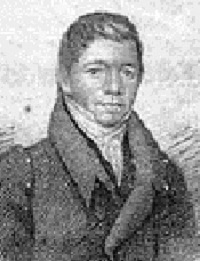 William Apess
William Apess
1798-1839
William Apess was a Native American writer, preacher and politician of the Pequot tribe. Born to mixed-blood parents William and Candace (she may have been part African-American), Apess spent his life until the age of five living in the woods around Colrain, Massachusetts. He was then indentured to a series of white families who, while employing him as a servant, also provided him with an education. Apess eventually ran away and joined a militia in New York, fighting in the War of 1812. Aged only 16, Apess had already acquired the severe alcoholism that would ultimately kill him.
The years 1816 to 1818 were spent doing varied jobs in Canada but, wearied by drink dependency, Apess decided to return home to his family and tribe. Within a short period he managed to re-establish his sense of himself as a Pequot tribal member, but also began to attend meetings of the local Methodist groups. He was baptized in December 1818.
In 1821, Apess married Mary Wood and the couple went on to have three children. During this period he became ever more convinced of a vocation to preach, and in 1829 he was ordained as a Methodist minister. In the same year he published his autobiography, A Son of the Forest: The Experience of William Apess, a Native of the Forest, Comprising a Notice of the Pequod Tribe of Indians, Written by Himself. Written at least partly in reaction to advocates of Indian Removal, including President-to-be Andrew Jackson, this autobiography was the first wholly Native-authored book to be published. It uses the format of the spiritual confession to ironically comment on white prejudices about Natives.
As was the Methodist practice of the day, Apess and his family became itinerants, preaching in meetings all over New England to mixed congregations that would have included Native, Euro-American and African-American worshippers. In 1833, following a visit to the town of Mashpee, the largest Native town in Massachusetts, Apess became convinced that the state was acting illegally in denying the Mashpees self-government. This led to the so-called Mashpee Revolt – in reality a peaceful protest by Natives lead by Apess, which was met with threats of military force by the State Governor Levi Lincoln Jr.
During the period 1831-1836, Apess published several sermons and became known as a powerful speaker. However, dogged by alcoholism and with an increasing sense of injustice at white treatment of Natives, he gradually lost the respect in which he had been held, with even Mashpee groups distancing themselves from him. After preaching and then publishing an excoriating eulogy for King Philip in 1836, Apess fell into obscurity.
William Apess died on April 10, 1839 at 31 Washington Street in New York City, where he had moved with his second wife.
Source: http://en.wikipedia.org/wiki/William_Apess#Bibliography
 Bibliography
Bibliography
Press your browser’s BACK button to return to the previous page.
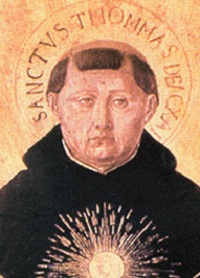 Thomas Aquinas
Thomas Aquinas
1225-1274
St. Thomas Aquinas was born in Aquino, a town in southern Italy from which he takes his surname. In his masterwork, Summa Theologica, he represents the pinnacle of scholasticism, the philosophical and theological school that flourished between 1100 and 1500 and attempted to reconcile faith with reason and the works of Aristotle with the scriptures.
The family of Thomas Aquinas was a noble one, his parents, the Count of Aquino and Countess of Teano, were related to Emperors Henry VI and Frederick II, as well as to the Kings of Aragon, Castile and France. During his early education, Aquinas exhibited great acumen in the medieval trivium of grammar, rhetoric and logic. Because of his high birth, Aquinas’ entry into the Dominican order in the early 1240s was very surprising. His family employed various means to dissuade him from his vocation, including imprisoning him for two years.
After a stint as a student in Paris, Aquinas made his way to Cologne to teach, receiving ordination to the priesthood in 1250. Soon after this, he was assigned to teach at Paris, where he also worked toward his degree of Doctor of Theology, which he received in 1257, with his friend St. Bonaventure, after some intramural political difficulty. The remainder of his life was spent in prayer, study and writing his great Summa Theologica, a systematic attempt to present the findings of scholasticism. Although Aquinas is sometimes perceived simply as an analytical and methodical writer, he was, especially in his later years, given to periods of mystical ecstasy. During one such experience, on December 6, 1273, he resigned from his writing project, indicating that he had perceived such wonders that his previous work seemed worthless.
The Summa Theologica was left unfinished, proceeding only as far as the 90th question of the third part. He died a few months later, on March 7, 1274. He was canonized in 1323 by John XXII. Although interest in Scholasticism in general and Thomism in particular waned during the 17th and 18th centuries, Leo XIII’s Encyclicai Aeterni Patris in 1889 re-established Thomism as the leading theological school of the Catholic church. Today, Thomist theology stands at the center of the Roman Catholic tradition.
Source: http://www.ccel.org/a/aquinas/
 Bibliography
Bibliography
Press your browser’s BACK button to return to the previous page.
 Reinaldo Arenas
Reinaldo Arenas
1943-1990
Reinaldo Arenas (July 16, 1943-December 7, 1990) was a Cuban poet, novelist and playwright who, despite his early sympathy for the 1959 revolution, grew critical of and then rebelled against the Cuban government.
Arenas was born in the countryside, in the northern part of the Province of Oriente, Cuba, and later moved to the city of Holguin. In 1963, he moved to Havana to enroll in the School of Planification and, later, in the Faculty of Letters at the Universidad de La Habana, where he studied philosophy and literature without completing a degree. The following year, he began working at the Biblioteca Nacional Jose Marti. While there, his talent was noticed and he was awarded prizes at Cirilo Villaverde National Competition hosted by UNEAC (National Union of Cuban Writers and Artists). His Hallucinations was awarded “First Honorable Mention” in 1966 although, as the judges could find no better entry, no First Prize was awarded that year.
Despite his short life and the hardships imposed during his imprisonment, Arenas produced a significant body of work. In addition to significant poetic efforts (“El Central,” “Leprosorio”), his Pentagonia is a set of five novels that comprise a “secret history” of post-revolutionary Cuba. It includes Singing from the Well (in Spanish also titled Celestino before Dawn), Farewell to the Sea (whose literal translation is The Sea Once More), Palace of the White Skunks, The Rabelaisian Color of Summer and The Assault. His second novel, Hallucinations (El Mundo Alucinante), rewrites the story of the colonial dissident priest Fray Servando Teresa de Mier. His autobiography, Before Night Falls, was on The New York Times list of the 10 best books of the year in 1993.
In 1987, Arenas was diagnosed with AIDS, but he continued to write and speak out against the Cuban government. He mentored many Cuban exile writers, including John O’Donnell-Rosales. After battling AIDS, Arenas committed suicide by taking an overdose of drugs and alcohol on December 7, 1990, in New York.
Source: http://en.wikipedia.org/wiki/Reinaldo_Arenas
 Bibliography
Bibliography
Press your browser’s BACK button to return to the previous page.
 Hannah Arendt
Hannah Arendt
1906-1975
Hannah Arendt (October 14, 1906-December 4, 1975) was a German American political theorist. She has often been described as a philosopher, although she refused that label on the grounds that philosophy is concerned with “man in the singular.” She described herself instead as a political theorist because her work centers on the fact that “men, not Man, live on the earth and inhabit the world.” Arendt’s work deals with the nature of power and the subjects of politics, authority and totalitarianism.
Arendt was born into a family of secular German Jews in the city of Linden (now part of Hanover), and grew up in Konigsberg and Berlin. At the University of Marburg, she studied philosophy. Arendt moved to Heidelberg, where she wrote her dissertation on the concept of love in the thought of Saint Augustine, under the existentialist philosopher-psychologist Karl Jaspers. She married Gunther Stern, later known as Gunther Anders, in 1929 in Berlin (they divorced in 1937).
The dissertation was published the same year, but Arendt was prevented from habilitating, a prerequisite for teaching in German universities, because she was Jewish. She worked for some time researching anti-Semitism before being interrogated by the Gestapo, and thereupon fled Germany for Paris. While in France, Arendt worked to support and aid Jewish refugees. She was imprisoned in Camp Gurs but was able to escape after a couple of weeks.
However, with the German military occupation of northern France during World War II, and the deportation of Jews to Nazi concentration camps, even by the Vichy collaborator regime in the unoccupied south, Arendt was forced to flee France.
In 1941, Arendt escaped with her mother to the United States. She then became active in the German-Jewish community in New York. From 1941 to 1945, she wrote a column for the German-language Jewish newspaper, Aufbau. From 1944, she directed research for the Commission of European Jewish Cultural Reconstruction and traveled frequently to Germany in this capacity.
After World War II, she returned to Germany and worked for Youth Aliyah, an organization that had saved thousands of children from the Holocaust. In 1950, she became a naturalized citizen of the United States. She served as a visiting scholar at the University of California, Berkeley, Princeton University and Northwestern University. She was elected a Fellow of the American Academy of Arts and Sciences in 1962 and a member of the American Academy of Arts and Letters in 1964.
She died of a heart attack at age 69 in 1975.
Source: http://en.wikipedia.org/wiki/Hannah_Arendt
 Bibliography
Bibliography
Press your browser’s BACK button to return to the previous page.
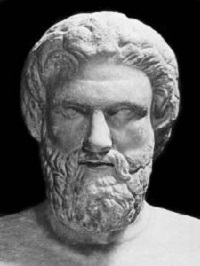 Aristophanes
Aristophanes
c. 446-386 BC
Aristophanes (ca. 446-ca. 386 BC), son of Philippus, of the deme Cydathenaus, was a prolific and much acclaimed comic playwright of ancient Athens. Eleven of his 40 plays survive virtually complete. These, together with fragments of some of his other plays, provide us with the only real examples we have of a genre of comic drama known as Old Comedy, and they are in fact used to define the genre.
Also known as the Father of Comedy and the Prince of Ancient Comedy, Aristophanes has been said to recreate the life of ancient Athens more convincingly than any other author. His powers of ridicule were feared and acknowledged by influential contemporaries – Plato singled out Aristophanes’ play, The Clouds, as slander contributing to the trial and execution of Socrates, although other satirical playwrights had caricatured the philosopher.
The demagogue Cleon once prosecuted Aristophanes for slandering the Athenian polis with his second play, The Babylonians (now lost). Details of his trial and punishment are not recorded but Aristophanes replied with merciless caricatures of Cleon in his subsequent plays, especially The Knights.
Source: http://en.wikipedia.org/wiki/Aristophanes
 Bibliography
Bibliography
Press your browser’s BACK button to return to the previous page.
 Aristotle
Aristotle
384-322 BC
Aristotle (384 BC-322 BC) was a Greek philosopher and polymath, a student of Plato and teacher of Alexander the Great. His writings cover many subjects, including physics, metaphysics, poetry, theater, music, logic, rhetoric, linguistics, politics, government, ethics, biology and zoology. Aristotle’s writings were the first to create a comprehensive system of Western philosophy, encompassing morality and aesthetics, logic and science, politics and metaphysics.
Aristotle’s views on the physical sciences profoundly shaped medieval scholarship, and their influence extended well into the Renaissance, although they were ultimately replaced by Newtonian physics. In the zoological sciences, some of his observations were confirmed to be accurate only in the 19th century. His works contain the earliest known formal study of logic, which was incorporated in the late 19th century into modern formal logic. In Metaphysics, Aristotelianism had a profound influence on philosophical and theological thinking in the Islamic and Jewish traditions in the Middle Ages, and it continues to influence Christian theology, especially the scholastic tradition of the Catholic Church. His Ethics, though always influential, gained renewed interest with the modern advent of virtue ethics. All aspects of Aristotle’s philosophy continue to be the object of active academic study today. Though Aristotle wrote many elegant treatises and dialogues, it is thought that the majority of his writings are now lost and only about one-third of the original works have survived.
Aristotle was born in Stageira, Chalcidice, in 384 BC, about 34 miles east of modern-day Thessaloniki. His father, Nicomachus, was the personal physician to King Amyntas of Macedon. Aristotle was trained and educated as a member of the aristocracy. At about the age of 18, he went to Athens to continue his education at Plato’s Academy. Aristotle remained at the academy for nearly 20 years before quitting Athens in 348-47 BC. He then traveled with Xenocrates to the court of his friend Hermias of Atarneus in Asia Minor. While in Asia, Aristotle traveled with Theophrastus to the island of Lesbos, where together they researched the botany and zoology of the island. Soon after Hermias’ death, Aristotle was invited by Philip II of Macedon to become the tutor to his son, Alexander the Great, in 343 BC.
By 335 BC he had returned to Athens, establishing his own school there known as the Lyceum. Aristotle conducted courses at the school for the next 12 years. It is during this period in Athens, from 335 to 323 BC, when Aristotle is believed to have composed many of his works. The works that have survived are in treatise form and were not, for the most part, intended for widespread publication, as they are generally thought to be lecture aids for his students. His most important treatises include Physics, Metaphysics, Nicomachean Ethics, Politics, De Anima (On the Soul) and Poetics.
Source: http://en.wikipedia.org/wiki/Aristotle
 Bibliography
Bibliography
Press your browser’s BACK button to return to the previous page.
 William H. Armstrong
William H. Armstrong
1911-1999
William H. Armstrong (September 14, 1911-April 11, 1999) was an American children’s author and educator, best known for his 1969 Newbery Medal-winning novel, Sounder.
After growing up on a farm near Lexington, Virginia, he graduated cum laude from Hampden-Sydney College in 1936, then continued his higher education with graduate work at the University of Virginia. In 1945, he became a history master at Kent School in Kent, Connecticut, where he remained for 52 years, teaching general studies and ancient history to generations of third formers (ninth-graders).
Armstrong was loved, admired and feared by his students. A truly formidable character and head of “study hall,” he suffered no fools lightly. More than once he was known to send a text book flying across the classroom with unerring accuracy to awaken one inattentive student or another.
In 1956, at the request of his school headmaster, he published his first book, a study guide called Study Is Hard Work. Armstrong followed this title with numerous other self-help books, and in 1963 he was rewarded the National School Bell Award of the National Association of School Administrators for distinguished service in the interpretation of education.
In 1969, Armstrong published his masterpiece, a short novel entitled Sounder, about the African-American Morgan sharecropper family in Depression-era Louisiana. Praised by critics, Sounder won the John Newbery Medal and the Lewis Carroll Shelf Award in 1970, and was adapted into a major motion picture in 1972 starring Paul Winfield and Cicely Tyson. Despite its success, it was criticized by some African-Americans because they claimed that a white writer couldn’t really understand their experience.
Among his other novels are The Sour Land, which is a sequel to Sounder, though not labeled as such, The Mills of God and The MacLeod Place, the story of a multi-generational family farm displaced by the construction of the Blue Ridge Parkway.
By the mid-1970s, enriched by earnings from Sounder, among other works, Armstrong was thoroughly ensconced in Kent School. He raised sheep for Passover on a beautiful hillside piece of property provided by the school and reportedly only charged Kent $1 per year for his academic services.
He continued to be prolific in his writing output, mainly publishing books with historical or biblical main characters, such as Hadassah: Esther the Orphan Queen (1972) and The Education of Abraham Lincoln (1974). Armstrong was rewarded an honorary Doctor of Letters degree from Hampden-Sydney College in 1986.
He died in 1999 at his home in Kent, Connecticut at the age of 87.
Source: http://en.wikipedia.org/wiki/William_H._Armstrong
 Bibliography
Bibliography
Press your browser’s BACK button to return to the previous page.
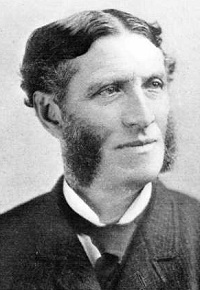 Matthew Arnold
Matthew Arnold
1822-1888
Matthew Arnold, poet and critic, was born at Laleham on the Thames, the eldest son of Thomas Arnold, historian and great headmaster of Rugby, and of Mary (Penrose) Arnold. He was educated at Winchester; Rugby, where he won a prize for a poem, “Alaric at Rome;” and Oxford, to which he went as a Scholar of Balliol College in 1841, and where he won the Newdigate Prize for “Cromwell, A Prize Poem” and received a Second Class in litterae humaniores.
In 1847, he became private secretary to Lord Lansdowne, who in 1851 secured him an inspectorship of schools, which almost to the end of his life was to absorb the greater part of his time and energies, and may have been partly responsible for the smallness of his poetical output. But it shortly enabled him to marry Frances Lucy Wightman, daughter of Sir William Wightman, a Judge of the Queen’s Bench.
His literary career – leaving out the two prize poems – had begun in 1849 with the publication of The Strayed Reveller and Other Poems by A., which attracted little notice. Empedocles on Etna and Other Poems (among them “Tristram and Iseult”), published in 1852, had a similar fate. In 1855 appeared Poems, Second Series, among them “Balder Dead.”
In 1861 his lectures On Translating Homer were published, to be followed in 1862 by Last Words on Translating Homer. “The Function of Criticism at the Present Time” and “The Literary Influence of Academies” were published as the first two of the Essays in Criticism (1865).
After the publication in 1867 of New Poems, which included “Thyrsis” and “Rugby Chapel,” elegies on Clough and on Dr. Arnold, and in 1868 of the “Essay on the Study of Celtic Literature,” Arnold turned almost entirely from literature to social and theological writings, beginning with the challenging “Culture and Anarchy.” To the relief of a good many of his contemporaries, a volume appeared in 1878 called Last Essays on Church and Religion; and the next year was published Mixed Essays.
In 1883, Gladstone conferred on Arnold a pension of £250 a year, enabling him to retire from the post in the exercise of which he had not only traveled the length and breadth of England, but made several trips abroad to report on continental education. These reports were published in book form and, together with his ordinary reports as a school inspector, had an important effect on English education.
He crossed the Atlantic in 1886 on a visit to his daughter, who had married an American. When she returned the visit in 1888, he went to Liverpool to meet her and there, while running to catch a tramcar, suddenly died.
Source: http://www.victorianweb.org/authors/arnold/bio.html
 Bibliography
Bibliography
Press your browser’s BACK button to return to the previous page.
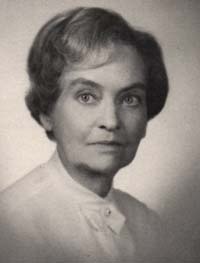 Harriette Arnow
Harriette Arnow
1908-1986
Harriette Arnow (July 7, 1908-March 22, 1986) was an American novelist who lived in Kentucky and Michigan. Arnow has been called an expert on the people of the Southern Appalachian Mountains, but she herself loved cities and spent crucial periods of her life in Cincinnati and Detroit.
She was born as Harriette Louisa Simpson in Monticello, Wayne County, Kentucky, and grew up in neighboring Pulaski County. Born one of six siblings to a family that traced its heritage to the Revolutionary War era, both parents were teachers and she was raised to be a teacher. Arnow wanted to write and to develop her knowledge of the land and geology. She attended Berea College for two years before transferring to the University of Louisville. She worked for two years as a teacher in rural Pulaski County, then one of the more remote areas of Appalachia, before moving to Cincinnati, where in 1935 she published her first works in Esquire, two short stories – “A Mess of Pork” and “Marigolds and Mules.” She used the pseudonym H.L. Simpson and sent a photo of her brother-in-law to disguise her gender.
In 1936 she published her first novel, Mountain Path, basing it on her experiences as a teacher. Under the instructions of her publisher, Arnow added sensational “Appalachian” stereotypical elements (moonshining, feuds) to her original work, a much more sedate series of sketches.
From 1934-1939 she lived in Cincinnati and worked for the Federal Writer’s Project of the WPA, where she met her future husband, Harold B. Arnow, the son of Jewish immigrants, in 1939. They lived briefly in Pulaski County, Harriette again working as a teacher, before settling in a public housing complex in Detroit, Michigan in 1944. Her 1949 novel, Hunter’s Horn, was a bestseller and received considerable critical acclaim, finishing close to William Faulkner’s A Fable in that year’s voting for the Pulitzer Prize.
In 1950, the Arnows moved to Ann Arbor, Michigan. She published her most famous work, The Dollmaker, in 1954. This novel about a poor Kentucky family forced by economic necessity to move to Detroit reflected her own life, but also reflects the experiences of many Appalachians who migrated from their homes for the promise of better lives in the industrialized North. Told through the eyes of Gertie Nevels, a woman torn from the woods and farmland to move with her children to join her husband living in WWII factory workers’ housing in Detroit, it can be seen as a work of feminist fiction. Arnow herself disputed this characterization, however, preferring to see it as an individual woman’s struggle to survive in a harsh and changing world.
Later works included the historical studies, Seedtime on the Cumberland and Flowering of the Cumberland. Her last books were the novels, The Weedkiller’s Daughter (1970), The Kentucky Trace (1974) and the memoir, Old Burnside (1977).
She died in 1986, aged 77, at her farm in Washtenaw County, Michigan.
Source: http://en.wikipedia.org/wiki/Harriette_Simpson_Arnow
 Bibliography
Bibliography
Press your browser’s BACK button to return to the previous page.
 The Articles of Confederation
The Articles of Confederation
1776-1777
The Articles of Confederation, formally the Articles of Confederation and Perpetual Union, was an agreement among the 13 founding states that legally established the United States of America as a confederation of sovereign states and served as its first constitution. Its drafting by the Continental Congress began in mid-1776 and an approved version was sent to the states for ratification in late 1777. The formal ratification by all 13 states was completed in early 1781. Even if not yet ratified, the Articles provided domestic and international legitimacy for the Continental Congress to direct the American Revolutionary War, conduct diplomacy with Europe and deal with territorial issues and Indian relations. Nevertheless, a perceived weak government created by the Articles became a matter of concern for key nationalists and in 1789 the Articles were replaced with the U.S. Constitution. It provided for a much stronger national government with a chief executive (the president), courts and taxing powers.
Source: http://en.wikipedia.org/wiki/Articles_of_Confederation
 Bibliography
Bibliography
Press your browser’s BACK button to return to the previous page.
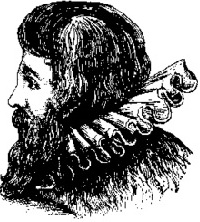 Roger Ascham
Roger Ascham
1515-1568
Roger Ascham was born in Kirby Wiske, Yorkshire, in 1515, the youngest son of John and Margaret Ascham. In 1530 Ascham entered St. John’s College, Cambridge, where he applied himself to the study of Greek. He received his bachelor’s degree at the age of 18 on February 18, 1534 and became fellow of the college in March. In 1537, at the age of 21, Ascham became master of arts and began tutoring younger students. Ascham became reader in Greek around 1538 until Henry VIII founded a lecture to take his place.
One of Ascham’s favorite pastimes was archery. In 1545, Ascham published the treatise, “Toxophilus or the Schole or Partitions of Shooting,” partly in defense of archery against those who found the sport unbefitting a scholar. The work was dedicated to Henry VIII, who enjoyed the treatise so much that he granted Ascham a pension: Ten pounds a year. Ascham was further honored by being assigned to tutor Prince Edward.
In 1548, after the death of Princess Elizabeth’s tutor, Ascham was appointed to the post of teaching the young woman who would become Queen Elizabeth I. He held the post until 1550 when he left the post without her consent. He was appointed secretary to Sir Richard Morisine and accompanied him to Germany later the same year. During his trip, Ascham wrote his Report and Discourse of the Affairs in Germany, containing his impressions on the people and culture of Germany. Ascham also visited Italy, later recounting “the vices of Venice” in The Scholemaster. Morisine was recalled to England at the death of Edward in 1553 and Ascham returned to Cambridge.
During Ascham’s absence he had been appointed Latin secretary to King Edward, a post he was instated in also under Queen Mary I. In 1554, Ascham married Margaret Howe. Upon Queen Mary’s death in 1558, he was appointed secretary to Queen Elizabeth and in 1559 he was given the prebend of Westwang in Yorkshire.
In 1563 Ascham was invited by Sir Edward Sackville to write a treatise on education. This became The Scholemaster, published posthumously in 1570.
Ascham took ill in 1568 with an unidentified disease and died at the age of 53. Hearing of his death Queen Elizabeth is said to have exclaimed: “I would rather have cast ten thousand pounds in the sea than parted from my Ascham.”
Source: http://www.luminarium.org/renlit/aschbio.htm
 Bibliography
Bibliography
Press your browser’s BACK button to return to the previous page.
 Timothy Garton Ash
Timothy Garton Ash
1955-
Timothy Garton Ash (born July 12, 1955) is a British historian, author and commentator. He is currently serving as Professor of European Studies at Oxford University. Much of his work has been concerned with the late modern and contemporary history of Central and Eastern Europe. He has written about the Communist dictatorships of that region, their experience with the secret police, the Revolutions of 1989 and the transformation of the former Eastern Bloc states into member states of the European Union. He has examined the role of Europe in an increasingly post-Western world and the challenge of combining freedom and diversity – especially in relation to free speech. He also writes a widely syndicated weekly column on international affairs. In January 2012, he launched Free Speech Debate, a multi-lingual Web project to research free speech norms in the age of the Internet and mass migration.
Ash was educated at Sherborne School, an independent school for boys in the market town of Sherborne in Dorset in South West England, followed by Exeter College at the University of Oxford, where he studied Modern History. For post-graduate study, he went to St. Antony’s College, Oxford and then, in the still-divided Berlin, the Free University in West Berlin and the Humboldt University in East Berlin.
In the 1980s, Ash was foreign editor of The Spectator and a columnist for The Independent. He became a fellow at St. Antony’s College in 1989, a senior fellow at Stanford University’s Hoover Institution in 2000 and Professor of European Studies at the University of Oxford in 2004. He has written a weekly column in The Guardian since 2004 and is a longtime contributor to The New York Review of Books.
He and his wife Danuta live predominantly in Oxford, although also in Stanford. They have two sons.
Source: http://en.wikipedia.org/wiki/Timothy_Garton_Ash
 Bibliography
Bibliography
Press your browser’s BACK button to return to the previous page.
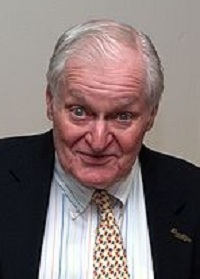 John Ashbery
John Ashbery
1927-2017
John Lawrence Ashbery (July 28, 1927-September 3, 2017) was an American poet. He published more than 20 volumes of poetry and won nearly every major American award for poetry, including a Pulitzer Prize in 1976 for his collection, Self-Portrait in a Convex Mirror. But Ashbery’s work still proves controversial.
Ashbery was born in Rochester, New York, the son of Helen (nee Lawrence), a biology teacher, and Chester Frederick Ashbery, a farmer. He was raised on a farm near Lake Ontario; his brother died when they were children. Ashbery was educated at Deerfield Academy. At Deerfield, an all-boys school, Ashbery read such poets as W.H. Auden and Dylan Thomas and began writing poetry. One of his poems was published in Poetry magazine, although under the name of a classmate who had submitted it without Ashbery’s knowledge or permission. He also published a handful of poems, including a sonnet about his frustrated love for a fellow student, and a piece of short fiction in the school newspaper, The Deerfield Scroll. His first ambition was to be a painter. From the age of 11 until he was 15, Ashbery took weekly classes at the art museum in Rochester.
Ashbery graduated in 1949 with an A.B., cum laude, from Harvard College, where he was a member of The Harvard Advocate, the university’s literary magazine, and the Signet Society. He wrote his senior thesis on the poetry of W.H. Auden. Ashbery went on to study briefly at New York University and received an M.A. from Columbia in 1951.
After working as a copywriter in New York from 1951 to 1955, from the mid-1950s, when he received a Fulbright Fellowship, through 1965, Ashbery lived in France. He was an editor of the 12 issues of Art and Literature (1964-67) and the New Poetry issue of Harry Mathews’ Locus Solus (# 3/4; 1962). To make ends meet he translated French murder mysteries, served as the art editor for the European edition of The New York Herald Tribune and was an art critic for Art International (1960-65) and a Paris correspondent for Art News (1963-66), when Thomas Hess took over as editor. After returning to the United States, he continued his career as an art critic for New York and Newsweek magazines while also serving on the editorial board of ARTNews until 1972. Several years later, he began a stint as an editor at Partisan Review, serving from 1976 to 1980.
In the early 1970s, Ashbery began teaching at Brooklyn College. He was elected a Fellow of the American Academy of Arts and Sciences in 1983. In the 1980s, he moved to Bard College, where he was the Charles P. Stevenson Jr. Professor of Languages and Literature, until 2008, when he retired; afterward, he has continued to win awards, present readings and work with graduates and undergraduates at many other institutions. He was the poet laureate of New York state from 2001 to 2003 and also served for many years as a chancellor of the Academy of American Poets. He served on the contributing editorial board of the literary journal, Conjunctions. He was a Millet Writing Fellow at Wesleyan University in 2010 and participated in Wesleyan’s Distinguished Writers Series.
Ashbery died on September 3, 2017 at his home in Hudson, New York of natural causes at the age of 90.
Source: http://en.wikipedia.org/wiki/John_Ashbery
 Bibliography
Bibliography
Press your browser’s BACK button to return to the previous page.
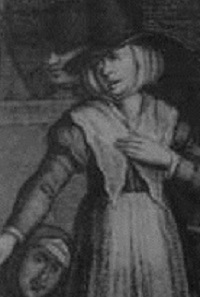 Elizabeth Ashbridge
Elizabeth Ashbridge
1713-1755
Elizabeth Ashbridge was born in 1713 in the town of Middlewich in Cheshire, England, to Thomas and Mary Sampson. Thomas was a surgeon on sea vessels and Mary was a pious follower of the Church of England.
When Elizabeth turned 14, she married a miserly stocking weaver several years her elder without parental consent. She left with him only to become a widow herself five months later. This marriage drove a wedge between herself and her father, who refused to accept her back in her childhood home. So Elizabeth was sent to Dublin, Ireland, where she lived for the next five years with some Quaker relatives of her mother.
In part due to her rebellious nature, Elizabeth hatched a plan where she would migrate to America. While preparing for her departure, she was kidnapped by a woman who trafficked human beings as indentured servants for profit. The woman had tricked her into believing she was providing her with a passage to America and led her to a boat where she was enslaved. About five weeks later, Elizabeth managed an escape. Soon after, Elizabeth got on the very same boat on which she had been indentured and set off for America. During the voyage she averted mutiny upon the ship, after hearing a group of Irish servants plotting a hostile takeover. Upon telling the captain, he had her sign an indentureship contract of four years which he sold to a brutish man from New York.
This was followed by three long years of adversity working for this master. However, during her indentureship she managed to work odd jobs to pay off her last year of the contract. It was during this time that she met her second husband, a teacher by the name of Sullivan.
Sometime during this second marriage, the couple visited relatives in Pennsylvania. It was here that Elizabeth experienced a conversion from the Anglicanism of her youth to the beliefs of the Quakers. Her husband, Sullivan, felt deeply threatened by this development and demanded that she live her life by his side roaming the various colonies.
Ultimately, Sullivan could not keep Elizabeth from her religious practice and eventually she was made a Quaker minister. Sullivan even began displaying mild interest in Quakerism by now. One night in a drunken stupor he enlisted himself in the army and was soon called to serve, which he refused by claiming his Quaker religion. This resulted in a horrific beating that hospitalized him and ultimately killed him in under a year.
Five years later Elizabeth married a third husband, Aaron Ashbridge. Aaron was a well known and respected member within the Quaker community in Chester County, Pennsylvania.
Source: http://en.wikipedia.org/wiki/Elizabeth_Ashbridge
 Bibliography
Bibliography
Press your browser’s BACK button to return to the previous page.
 Wellesley St. George Ashe
Wellesley St. George Ashe
1881-1958
Wellesley Ashe was born on February 25, 1881, at Johnstown House, Duleek, Co. Meath. Duleek had been the scene of James II’s final retreat at the Battle of the Boyne in 1690. Wellesley was the second son of Rev. Henry A. Ashe, Church of Ireland, rector of the parish, and his wife, Nannie Louisa, nee Tyner.
Their elder son, Norman d’Acourt, died in August 1886, aged 7. Wellesley’s only sister, Gwendolyn Constance Kirwan, later married a cousin, Charles Orpen. Wellesley was sent to Norfolk to be tutored by Mr. Gedge, a friend of his father’s. In January 1896 he was sent to Portora Royal School, Enniskillen. He left Portora in 1900 and joined the Dublin City Artillery. In 1901 he departed for the South African war as a subaltern under Col. Munro. He served the last eight months of the war in the 21st Bn., Imperial Yeomanry, under Lt. Col. A. Weston-Jarvis and earned the Queen’s Medal.
After the war, Ashe worked for Lord Roberts’ Workshops and SSAFA, service charities, in London. He had a flat in Chelsea, dined off gold plate at the Lord Mayor’s banquet and enjoyed dinners and balls, many years later recalling the shocking poverty of Edwardian London. He still held a commission (one of many in his life) in the Dublin City RGA but he hankered for the sun and space of Africa. One day in 1905, he saw a poster recruiting ex-officers to join the BSAMP (British South Africa Mounted Police). He staked his savings on the City and Suburban (a race still run) promising himself that, if he lost, he would take up this offer. In due course he sailed again for the Cape. He served as a constable for three years, sending home well-illustrated letters.
After World War I, Ashe returned to India where he was joined by his wife. In the 1920s he went to Canada alone to work on a ranch, exploring prospects for raising his family there.
In 1935, the family took a house in Connemara, moving to Roscommon on the outbreak of World War II and later to Perthshire in Scotland, where Ashe joined the Home Guard. After the war they lived in Mayo and Tipperary, returning in the 1950s to England where, in Sussex in 1958, he died.
Source: http://www.quidham.com/ashehistory/life.htm
 Bibliography
Bibliography
Press your browser’s BACK button to return to the previous page.
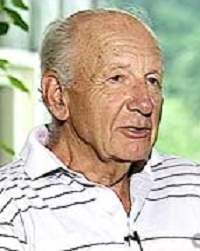 Eliot Asinof
Eliot Asinof
1919-2008
Eliot Asinof (July 13, 1919-June 10, 2008) was an American writer of fiction and nonfiction best known for his works about baseball. His most famous book was Eight Men Out, a nonfiction reconstruction of the 1919 “Black Sox” scandal.
Asinof was born in Manhattan and lived in and around New York City for much of his life. In his youth, he worked in his family’s tailoring business. He graduated from Swarthmore College in 1940, then played briefly as a minor-league first baseman in the Philadelphia Phillies’ organization. During World War II, Asinof served in the U.S. Army on Adak in the Aleutian Islands. He was married for five years to Jocelyn Brando, an actress who was the sister of Marlon Brando; the marriage ended in divorce in 1955.
Besides playing the game seriously, Asinof wrote extensively about baseball. His 1955 debut novel, Man on Spikes, was based on the experience of a friend, Mickey Rutner, who played minor league ball and 12 games in the majors. The work was chosen as one of “the golden dozen” baseball books by noted author Roger Kahn.
Asinof’s most famous book, Eight Men Out, painstakingly reconstructed the events of the “Black Sox” scandal that marred the World Series between the Chicago White Sox and the Cincinnati Reds in the same year that Asinof was born. The book was published in 1963; the film Eight Men Out, co-written by Asinof and director John Sayles, appeared in 1988. Asinof also worked on other projects related to the scandal, including TV documentaries such as the 2001 ESPN Sports Century Flashback: The 1919 Black Sox Scandal and 2005’s The Top 5 Reasons You Can’t Blame the 1919 Chicago White Sox for “Throwing” the 1919 World Series to the Cincinnati Reds.
In 1968, Asinof signed the “Writers and Editors War Tax Protest” pledge, vowing to refuse tax payments in protest against the Vietnam War.
Asinof wrote other novels and nonfiction books unrelated to baseball, including The Fox Is Crazy Too (1976), the story of skyjacker Garrett Brock Trapnell. His career as a scriptwriter was curtailed when he was blacklisted for a time during the 1950s.
Source: http://en.wikipedia.org/wiki/Eliot_Asinof
 Bibliography
Bibliography
Press your browser’s BACK button to return to the previous page.
 Mary Astell
Mary Astell
1666-1731
Mary Astell (November 12, 1666-May 11, 1731) was an English feminist writer and rhetorician. Her advocacy of equal educational opportunities for women earned her the title “the first English feminist.”
Astell was born in Newcastle upon Tyne to Peter and Mary (Errington) Astell. She was baptized in St. John’s Church in Newcastle. Her family was upper-middle-class and lived in Newcastle throughout her early childhood. Her father was a conservative royalist Anglican who managed a local coal company. As a woman, Mary received no formal education, although she did receive an informal education when she was eight from her uncle, an ex-clergyman named Ralph Astell whose bouts with alcoholism prompted his suspension from the Church of England. Though suspended from the Church, he was affiliated with the Cambridge-based philosophical school that based its teachings around radical philosophers such as Aristotle, Plato and Pythagoras.
Astell moved to Chelsea, London, in 1688, where she was fortunate enough to become acquainted with a circle of literary and influential women who assisted in the development and publication of her work. She was also in contact with the Archbishop of Canterbury, William Sancroft, who was known for his charitable works; Sancroft assisted Astell financially and introduced her to her future publisher.
In response to a divorce, Mary Astell published Some Reflections upon Marriage in 1700. One valid point that Astell made was that in order for a woman to obtain a healthy marriage she should first receive an education. In her third edition of Some Reflections upon Marriage, Astell responded to critics by urging women to seek out marriage based on friendship rather than necessity and pride.
After withdrawing from public life in 1709, Astell founded a charity school for girls in Chelsea as a token of the Society for the Propagation of Christian Knowledge, organizing the school’s curriculum herself with likely financial support from her patrons Lady Catherine Jones and Lady Elizabeth Hastings. When she was 60 years old, she was invited to live with Lady Jones, where she resided until her death.
Astell died in 1731, a few months after a mastectomy to remove a cancerous right breast.
Source: http://en.wikipedia.org/wiki/Mary_Astell
 Bibliography
Bibliography
Press your browser’s BACK button to return to the previous page.
 Margaret Atwood
Margaret Atwood
1939-
Margaret Eleanor Atwood (born November 18, 1939) is a Canadian poet, novelist, literary critic, essayist, and environmental activist. She is among the most-honored authors of fiction in recent history; she is a winner of the Arthur C. Clarke Award and Prince of Asturias award for Literature, has been shortlisted for the Booker Prize five times, winning once, and has been a finalist for the Governor General’s Award seven times, winning twice.
While she is best known for her work as a novelist, she is also a poet, having published 15 books of poetry to date. Many of her poems have been inspired by myths and fairy tales, which have been interests of hers from an early age.
Atwood has published short stories in Tamarack Review, Alphabet, Harper’s, CBC Anthology, Ms., Saturday Night and many other magazines. She has also published four collections of stories and three collections of unclassifiable short prose works.
Source: http://en.wikipedia.org/wiki/Margaret_Atwood
 Bibliography
Bibliography
Press your browser’s BACK button to return to the previous page.
 David Auburn
David Auburn
1970-
David Auburn (born in 1970 in Chicago) is an American playwright.
He was raised in Ohio and Arkansas. He attended the University of Chicago, where he was a member of Off-Off Campus, and received a degree in English literature. Following a fellowship with Amblin Entertainment, he moved to New York City and spent two years in The Juilliard School’s playwriting program. His first full-length play, Skyscraper, ran Off Broadway in 1997. His short play, What Do You Believe about the Future?, appeared in Harper’s magazine and has since been adapted for the screen. He is best known for his 2000 play, Proof, which won the 2001 Tony Award for Best Play, as well as the 2001 Pulitzer Prize for Drama.
He has also been awarded the Helen Merrill Playwriting Award and a Guggenheim Fellowship. Following Proof, he wrote the screenplay for the movie, The Lake House, released in 2006. In 2007, he made his directorial debut with The Girl in the Park, for which he also wrote the screenplay.
He currently resides in Manhattan, New York.
Source: http://en.wikipedia.org/wiki/David_Auburn
 Bibliography
Bibliography
Press your browser’s BACK button to return to the previous page.
 W.H. Auden
W.H. Auden
1907-1973
Wystan Hugh Auden (February 21, 1907-September 29, 1973), who published as W.H. Auden, was an Anglo-American poet, born in England, later an American citizen, regarded by many as one of the greatest writers of the 20th century. His work is noted for its stylistic and technical achievements, its engagement with moral and political issues and its variety of tone, form and content. The central themes of his poetry are love, politics and citizenship, religion and morals, and the relationship between unique human beings and the anonymous, impersonal world of nature.
Auden grew up in Birmingham in a professional middle class family and read English literature at Christ Church, Oxford. His early poems, written in the late 1920s and early 1930s, alternated between telegraphic modern styles and fluent traditional ones, were written in an intense and dramatic tone and established his reputation as a left-wing political poet and prophet. He became uncomfortable in this role in the later 1930s and abandoned it after he moved to the United States in 1939, where he became an American citizen in 1946. His poems in the 1940s explored religious and ethical themes in a less dramatic manner than his earlier works, but still combined traditional forms and styles with new forms devised by Auden himself. In the 1950s and 1960s, many of his poems focused on the ways in which words revealed and concealed emotions, and he took a particular interest in writing opera librettos, a form ideally suited to direct expression of strong feelings.
He was also a prolific writer of prose essays and reviews on literary, political, psychological and religious subjects, and he worked at various times on documentary films, poetic plays and other forms of performance. Throughout his career he was both controversial and influential. After his death, some of his poems, notably “Funeral Blues” (“stop all the clocks”) and “September 1, 1939,” became widely known through films, broadcasts and popular media.
He died in Vienna in 1973 and was buried in Kirchstetten.
Source: http://en.wikipedia.org/wiki/W._H._Auden
 Bibliography
Bibliography
Press your browser’s BACK button to return to the previous page.
 Jane Austen
Jane Austen
1775-1817
Jane Austen (December 16, 1775-July 18, 1817) was an English novelist whose works of romantic fiction, set among the landed gentry, earned her a place as one of the most widely read writers in English literature, her realism and biting social commentary cementing her historical importance among scholars and critics.
Austen lived her entire life as part of a close-knit family located on the lower fringes of the English landed gentry. She was educated primarily by her father and older brothers as well as through her own reading. The steadfast support of her family was critical to her development as a professional writer. Her artistic apprenticeship lasted from her teenage years into her 30s. During this period, she experimented with various literary forms, including the epistolary novel, which she tried then abandoned, and wrote and extensively revised three major novels and began a fourth. From 1811 until 1816, with the release of Sense and Sensibility (1811), Pride and Prejudice (1813), Mansfield Park (1814) and Emma (1816), she achieved success as a published writer. She wrote two additional novels, Northanger Abbey and Persuasion, both published posthumously in 1818, and began a third, which was eventually titled Sanditon, but died before completing it.
Early in 1816, Jane Austen began to feel unwell. She ignored her illness at first and continued to work and to participate in the usual round of family activities. By the middle of that year, her decline was unmistakable to Austen and to her family, and Austen’s physical condition began a long, slow and irregular deterioration culminating in her death the following year.
Austen’s works critique the novels of sensibility of the second half of the 18th century and are part of the transition to 19th century realism. Her plots, though fundamentally comic, highlight the dependence of women on marriage to secure social standing and economic security. Her work brought her little personal fame and only a few positive reviews during her lifetime, but the publication in 1869 of her nephew’s A Memoir of Jane Austen introduced her to a wider public, and by the 1940s she had become widely accepted in academia as a great English writer.
Source: http://en.wikipedia.org/wiki/Jane_Austen
 Bibliography
Bibliography
Press your browser’s BACK button to return to the previous page.
 Mary Austin
Mary Austin
1868-1934
Mary Hunter Austin (September 9, 1868-August 13, 1934) was an American writer of fiction and nonfiction.
Austin was born on September 9, 1868 in Carlinville, Illinois, the fourth of six children to George and Susannah (Graham) Hunter. She graduated from Blackburn College in 1888. For 17 years she made a special study of Indian life in the Mojave Desert, and her publications set forth the intimate knowledge she thus acquired. She was a prolific novelist, poet, critic and playwright, as well as an early feminist and defender of Native American and Spanish-American rights. She is best known for her tribute to the deserts of the American Southwest, The Land of Little Rain (1903).
Her family moved to California in 1888 and established a homestead in the San Joaquin Valley. She married Stafford Wallace Austin on May 18, 1891 in Bakersfield, California. He was from Hawaii and a graduate of the University of California, Berkeley. Their home in Independence, California, now a historical landmark, was designed and built by the couple.
She and her husband were involved in the local water dispute, where the water of Owens Valley was eventually drained to supply Los Angeles. When their battle was lost, he moved to Death Valley, California, and she moved to Carmel, California. There she was part of a social circle that included Jack London, Ambrose Bierce and George Sterling and was one of the founders of the Forest Theater.
Austin died August 13, 1934 in Santa Fe, New Mexico.
Source: http://en.wikipedia.org/wiki/Mary_Hunter_Austin
 Bibliography
Bibliography
Press your browser’s BACK button to return to the previous page.
 Avi (Edward Irving Wortis)
Avi (Edward Irving Wortis)
1937-
Edward Irving Wortis (born December 23, 1937), better known by the pen name Avi, is a prominent American author of young adult and children’s literature. He is a winner of both the Newbery Honor and Newbery Medal.
Avi and his twin sister, Emily Wortis Leider (also a writer), were born in New York City to Joseph Wortis, a psychiatrist, and Helen Zunser Wortis, a social worker. In the year after Avi’s birth, his family moved to Brooklyn. When he was young his sister gave him the nickname “Avi.” Two of Avi’s grandfathers were writers and one grandmother was a playwright. In interviews, he recalled his mother reading to him and his sister every night, and going to the public library on Fridays. He is also the first cousin of the Academy Award-winning actor Alan Arkin.
After he failed Stuyvesant High School, Avi’s parents transferred him to Elisabeth Irwin High School, a smaller private school. There he studied with a tutor, Ella Ratner (whom he credits for his writing success), and found that he had dysgraphia, a condition causing him to reverse or misspell words.
Avi is a prolific author, having written 60 books for young readers. He has written books for different age groups and in many genres. Perhaps his most famous books fall under the category of historical fiction, but he has also written fantasies, comedies, mysteries, ghost stories, adventure tales, realistic fiction and picture books. Avi has won many prestigious awards for his books, including a Newbery Honor for The True Confessions of Charlotte Doyle in 1991 and another for Nothing but the Truth in 1992. His 50th book, Crispin: The Cross of Lead, was awarded the Newbery Medal in 2003. Avi’s book, Iron Thunder, about the ironclad Monitor and its historic battle with the CSS Virginia in Hampton Roads, Va., was selected as the 2009 Beacon of Freedom Award winner by Williamsburg Regional Library and Colonial Williamsburg Foundation.
As of the end of 2009, Avi had published 70 books, all written for children/young adults. In 2006, he wrote a sequel to Crispin: The Cross of Lead titled Crispin: At the Edge of the World. After living in Providence, Rhode Island in the 1980s and 1990s, Avi now lives in Denver, Colorado, with his wife, Linda Cruise Wright.
Source: http://en.wikipedia.org/wiki/Avi_%28author%29
 Bibliography
Bibliography
Press your browser’s BACK button to return to the previous page.
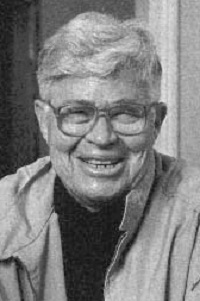 George Axelrod
George Axelrod
1922-2003
George Axelrod (June 9, 1922-June 21, 2003) was an American screenwriter, producer, playwright and film director, best known for his play, The Seven-Year Itch (1952).
Axelrod was born in New York City, New York, the son of Beatrice Carpenter, a silent film actress, and Herman Axelrod, who worked in real estate.
After serving in the Army Signal Corps during World War II, Axelrod found work writing scripts for radio programs, including The Shadow, Midnight and Grand Ole Opry, eventually branching into television. He contributed to or collaborated on more than 400 TV and radio scripts and wrote for top comedians, including Jerry Lewis and Dean Martin, before earning breakout success with his 1952 stage comedy, The Seven-Year Itch. Axelrod’s overnight success prompted him to write a seriocomic teleplay, Confessions of a Nervous Man.
Axelrod’s next stage hit was Will Success Spoil Rock Hunter? In 1959-60, Lauren Bacall starred in his comic play, Goodbye Charlie, which ran for 109 performances. During the late 1950s and early 1960s, Axelrod was one of the best-paid writers in Hollywood and was nominated for an Academy Award for his 1961 adaptation of Truman Capote’s Breakfast at Tiffany’s. He was highly regarded for his adaptation of Richard Condon’s novel for director John Frankenheimer’s Cold War thriller, The Manchurian Candidate (1962).
Axelrod wrote the original screenplay for How to Murder Your Wife (1965). In 1966, he directed Lord Love a Duck, and two years later he directed The Secret Life of an American Wife (1968). After a decade hiatus, he returned to films in 1979, providing the screenplay for an unsuccessful remake of The Lady Vanishes. Subsequent contributions include the scripts for Frankenheimer’s The Holcroft Covenant (1985) and The Fourth Protocol (1987).
Axelrod was also an author of three novels: Blackmailer, a comic mystery; Beggar’s Choice, a comedy of role reversal; and Where Am I Now When I Need Me?, a humorous overview of the Hollywood scene.
Source: http://en.wikipedia.org/wiki/George_Axelrod
 Bibliography
Bibliography
Press your browser’s BACK button to return to the previous page.
 Eleanor H. Ayer
Eleanor H. Ayer
Eleanor H. Ayer is a published author of children’s books and young adult books. Some of her published credits include: Colorado (Celebrate the States), Todo Lo Que Necesitas Saber Sobre La Paternidad Adolescente (Todo Lo Que Necesitas Saber), Todo Lo Que Necesitas Saber Sobre El Matrimonio Adolescente (Todo Lo Que Necesitas Saber/Need to Know-Spanish) and In the Ghettos: Teens Who Survived the Ghettos of the Holocaust (Teen Witnesses to the Holocaust).
Ayer received an M.S. from Syracuse University with a specialty in literary journalism.
Source: http://www.jacketflap.com/eleanor-h-ayer/44424
 Bibliography
Bibliography
Press your browser’s BACK button to return to the previous page.